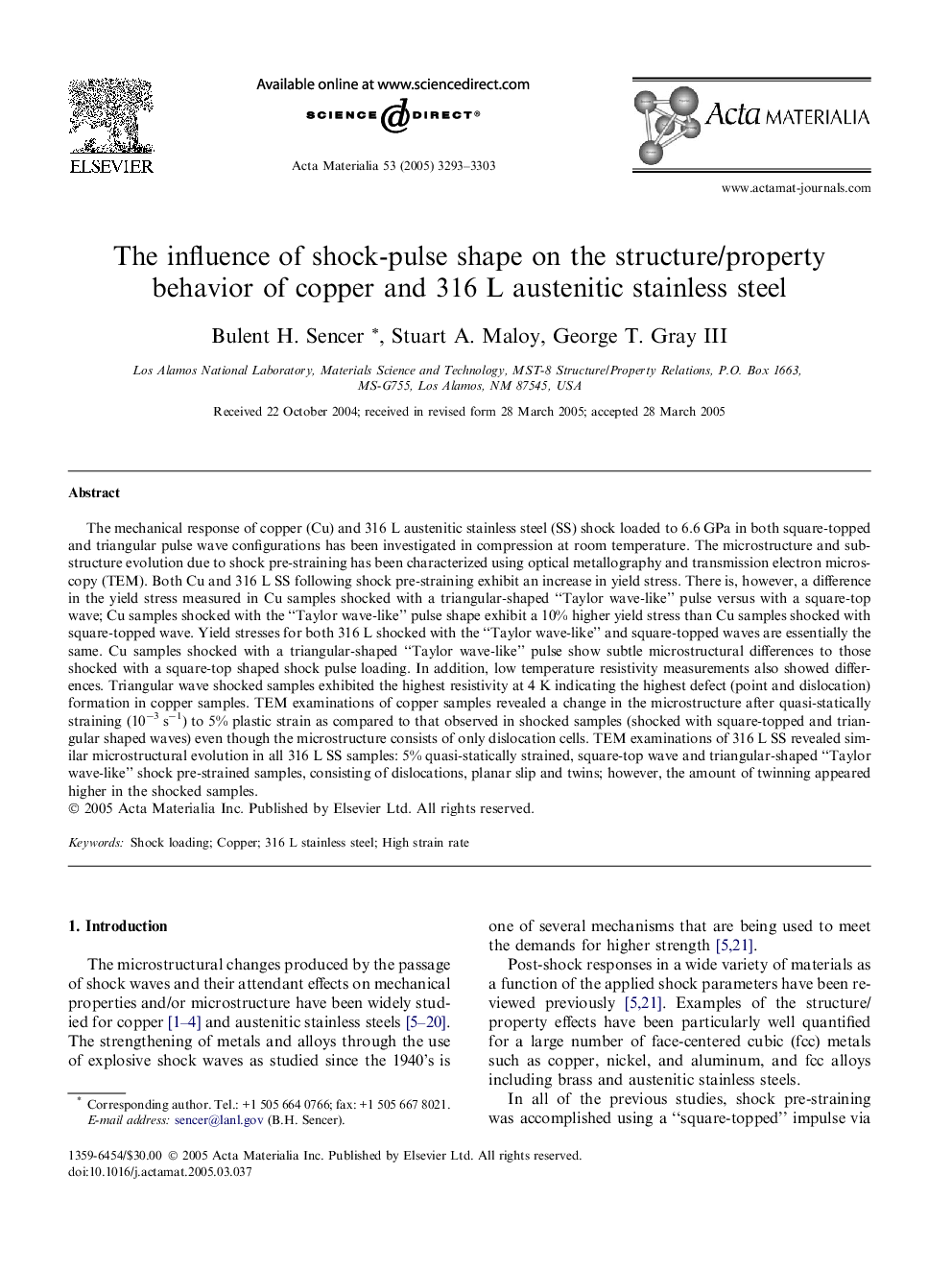| Article ID | Journal | Published Year | Pages | File Type |
|---|---|---|---|---|
| 1451252 | Acta Materialia | 2005 | 11 Pages |
The mechanical response of copper (Cu) and 316 L austenitic stainless steel (SS) shock loaded to 6.6 GPa in both square-topped and triangular pulse wave configurations has been investigated in compression at room temperature. The microstructure and substructure evolution due to shock pre-straining has been characterized using optical metallography and transmission electron microscopy (TEM). Both Cu and 316 L SS following shock pre-straining exhibit an increase in yield stress. There is, however, a difference in the yield stress measured in Cu samples shocked with a triangular-shaped “Taylor wave-like” pulse versus with a square-top wave; Cu samples shocked with the “Taylor wave-like” pulse shape exhibit a 10% higher yield stress than Cu samples shocked with square-topped wave. Yield stresses for both 316 L shocked with the “Taylor wave-like” and square-topped waves are essentially the same. Cu samples shocked with a triangular-shaped “Taylor wave-like” pulse show subtle microstructural differences to those shocked with a square-top shaped shock pulse loading. In addition, low temperature resistivity measurements also showed differences. Triangular wave shocked samples exhibited the highest resistivity at 4 K indicating the highest defect (point and dislocation) formation in copper samples. TEM examinations of copper samples revealed a change in the microstructure after quasi-statically straining (10−3 s−1) to 5% plastic strain as compared to that observed in shocked samples (shocked with square-topped and triangular shaped waves) even though the microstructure consists of only dislocation cells. TEM examinations of 316 L SS revealed similar microstructural evolution in all 316 L SS samples: 5% quasi-statically strained, square-top wave and triangular-shaped “Taylor wave-like” shock pre-strained samples, consisting of dislocations, planar slip and twins; however, the amount of twinning appeared higher in the shocked samples.
